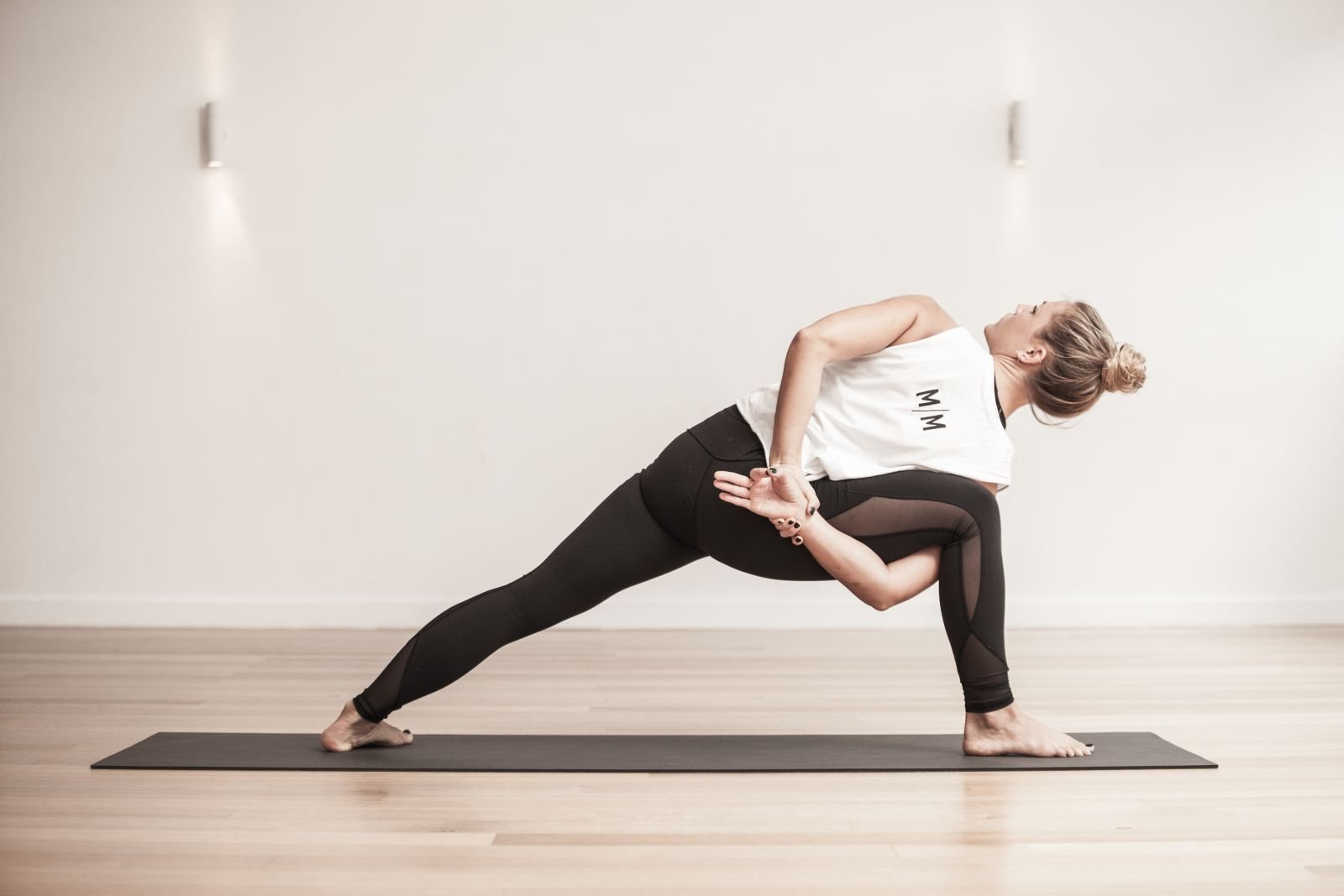
Ashtanga Vinyasa Yoga is a dynamic and physically demanding practice that synchronizes breath with movement. Originating from the teachings of Sri K. Pattabhi Jois, this form of yoga is known for its structured series of postures and emphasis on flowing transitions. But what makes Ashtanga Vinyasa Yoga unique? It's the combination of breath, posture, and gaze that creates a meditative flow, often referred to as a "moving meditation." Practitioners follow a set sequence, which builds strength, flexibility, and mental clarity. Whether you're a seasoned yogi or a curious beginner, understanding the core principles and benefits of Ashtanga Vinyasa Yoga can transform your practice. Ready to dive deeper? Let's explore 40 fascinating facts about this powerful yoga style.
Key Takeaways:
- Ashtanga Vinyasa Yoga, developed by K. Pattabhi Jois, emphasizes breath-synchronized movement and offers physical, mental, and emotional benefits. It's not just for the flexible or young, and has famous practitioners like Madonna and Gwyneth Paltrow.
- The practice follows a specific sequence of postures, with six series to master. It has evolved with modern adaptations like Mysore style and online platforms, making it accessible to a broader audience.
Origins of Ashtanga Vinyasa Yoga
Ashtanga Vinyasa Yoga is a dynamic and physically demanding practice. It has a rich history and unique characteristics that set it apart from other forms of yoga.
- Ashtanga Vinyasa Yoga was developed by K. Pattabhi Jois in the 20th century.
- The practice is rooted in the ancient text, the Yoga Korunta, which Jois studied under his teacher, T. Krishnamacharya.
- Ashtanga means "eight limbs," referring to the eightfold path outlined by the sage Patanjali in the Yoga Sutras.
- Vinyasa translates to "breath-synchronized movement," emphasizing the flow between poses.
Structure and Practice
The structure of Ashtanga Vinyasa Yoga is methodical and follows a specific sequence of postures. This sequence is designed to build strength, flexibility, and endurance.
- The practice consists of six series: Primary, Intermediate, and four Advanced series.
- Primary Series is known as Yoga Chikitsa, meaning yoga therapy, and focuses on detoxifying and aligning the body.
- Intermediate Series is called Nadi Shodhana, which means nerve cleansing, and works on the nervous system.
- The Advanced Series are known as Sthira Bhaga, meaning divine stability, and are highly challenging.
- Each series must be mastered before progressing to the next.
- The practice begins with Sun Salutations (Surya Namaskara) to warm up the body.
- Standing postures follow the Sun Salutations, building strength and balance.
- Seated postures come next, focusing on flexibility and hip opening.
- The practice ends with a sequence of finishing postures to cool down the body.
Breath and Movement
Breath and movement are integral to Ashtanga Vinyasa Yoga. The synchronization of breath with movement creates a meditative flow.
- Ujjayi breath is used throughout the practice, creating a rhythmic and calming effect.
- Each movement is linked to an inhale or exhale, ensuring continuous flow.
- The drishti or gaze point helps maintain focus and concentration.
- Bandhas or energy locks are engaged to control the flow of energy within the body.
- The Mula Bandha (root lock) and Uddiyana Bandha (abdominal lock) are the primary bandhas used.
Benefits of Ashtanga Vinyasa Yoga
Practicing Ashtanga Vinyasa Yoga offers numerous physical, mental, and emotional benefits. It is known for its transformative effects on the body and mind.
- Increases strength and muscle tone through challenging postures.
- Improves flexibility by stretching and lengthening muscles.
- Enhances cardiovascular health due to the dynamic and continuous flow.
- Promotes detoxification through sweating and deep breathing.
- Reduces stress by calming the mind and focusing on the breath.
- Boosts mental clarity and concentration through the use of drishti and bandhas.
- Encourages discipline and commitment due to the structured nature of the practice.
- Balances the nervous system by stimulating the parasympathetic response.
- Supports weight management through a vigorous and calorie-burning practice.
Common Misconceptions
Despite its popularity, there are several misconceptions about Ashtanga Vinyasa Yoga. Understanding these can help practitioners approach the practice with an open mind.
- Not only for the flexible: Beginners can start at any level and progress gradually.
- Not just physical: It incorporates breath, focus, and energy control.
- Not rigid: Modifications and adjustments are encouraged to suit individual needs.
- Not competitive: The practice is personal and non-competitive.
- Not exclusive to young people: Practitioners of all ages can benefit.
Famous Practitioners
Many well-known individuals have embraced Ashtanga Vinyasa Yoga, contributing to its global popularity.
- Madonna is an avid practitioner, often crediting Ashtanga for her fitness.
- Gwyneth Paltrow has spoken about the mental and physical benefits she experiences.
- Sting incorporates Ashtanga into his daily routine for balance and strength.
- Ricky Martin uses the practice to maintain his physical and mental well-being.
- Kareena Kapoor Khan, a Bollywood actress, practices Ashtanga for its holistic benefits.
Modern Adaptations
Ashtanga Vinyasa Yoga has evolved over time, with modern adaptations making it accessible to a broader audience.
- Mysore style classes allow practitioners to move at their own pace with guidance from a teacher.
- Led classes are guided by an instructor, providing a structured approach for beginners.
- Online platforms and virtual classes have made Ashtanga accessible to people worldwide.
Embracing the Ashtanga Journey
Ashtanga Vinyasa Yoga offers a rich tapestry of history, techniques, and benefits. From its roots in ancient India to its modern-day practice, this yoga style has captivated many. Whether you're drawn to its physical challenges or its meditative aspects, there's something for everyone. Remember, consistency is key. Regular practice can lead to improved flexibility, strength, and mental clarity. Don't get discouraged if progress seems slow; every yogi's journey is unique. Keep exploring the different series and poses, and you'll find what resonates with you. Ashtanga isn't just about the poses; it's about the connection between mind, body, and breath. So, roll out your mat, take a deep breath, and dive into the world of Ashtanga Vinyasa Yoga. Your journey awaits!
Frequently Asked Questions
Was this page helpful?
Our commitment to delivering trustworthy and engaging content is at the heart of what we do. Each fact on our site is contributed by real users like you, bringing a wealth of diverse insights and information. To ensure the highest standards of accuracy and reliability, our dedicated editors meticulously review each submission. This process guarantees that the facts we share are not only fascinating but also credible. Trust in our commitment to quality and authenticity as you explore and learn with us.


